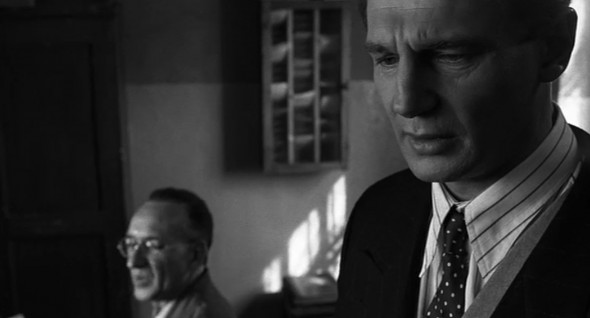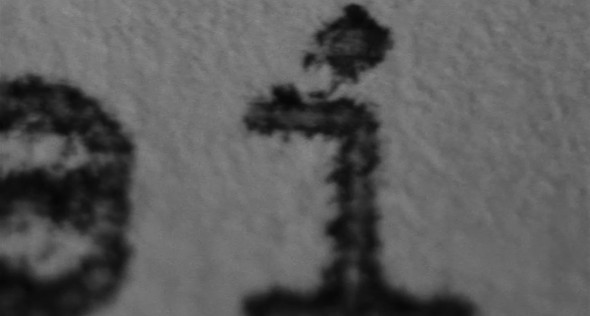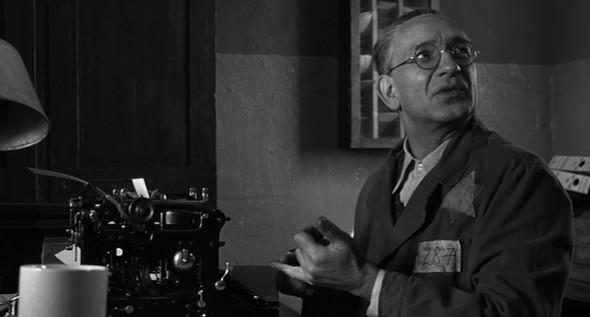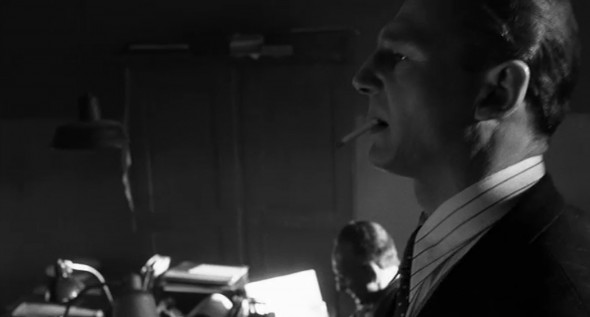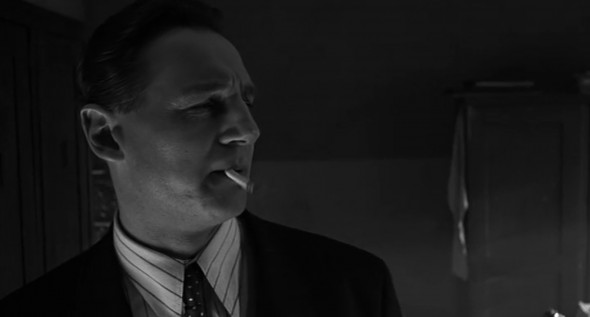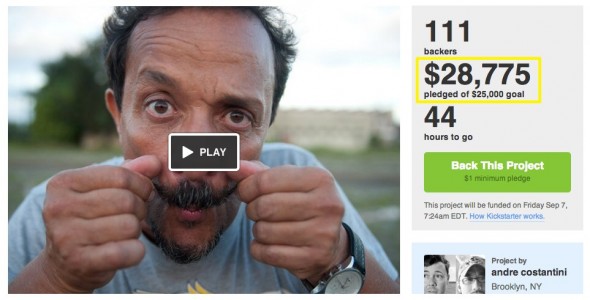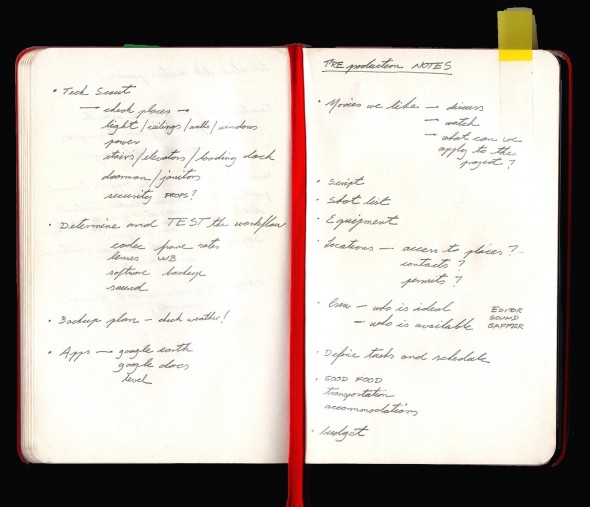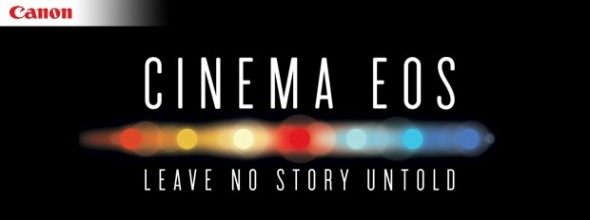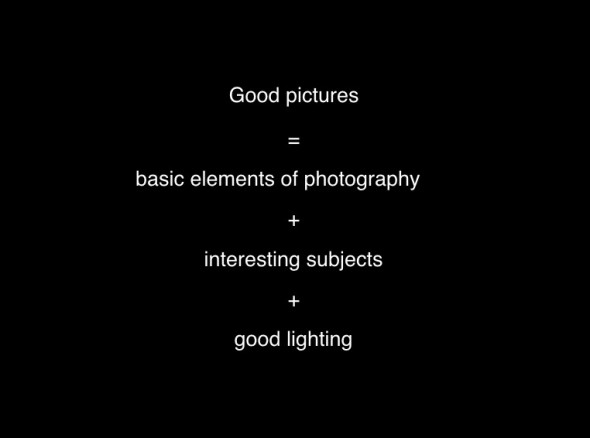Video
Francis Bacon and The Last Tango in Paris.
Inspiration often comes from the most unexpected sources. I am reading Moviemakers’ Master Class: Private Lessons from the World’s Foremost Directors, and found the conversation with Bernardo Bertolucci, and his inspiration for the “Last Tango in Paris” fascinating. (more…)
Video
There are two kinds of movie directors.
According to Woody Allen there are two kinds of directors: “the ones who have it, and the ones who don’t.”
It is well-known that there are two more kinds of movie directors: the ones who write their own material like Tarantino, and the ones who adapt, like Alfred Hitchcock, or Steven Spielberg. (more…)
Video
Wes Anderson’s Top 10 Movies, and the Color Trilogy.
I recently read an article where Wes Anderson picked his 10 favorites movies from the Criterion Collection. Guillermo del Toro does the same here. Some of their picks are “Pigs and Battleships“, “The Insect Woman“, and “Kuroneko.” Clearly, I have a LOT of movie watching to do this Summer.
I will also be reading the latest Criterion’s Film Essays. The one about Krzysztof Kie?lowski’s “three colors trilogy“; Blue (1993), White (1993), and Red (1994) is simply spectacular. (more…)
Video
NAB 2013 is here. Ghost Town goes wild with DSLR Shooters.
This coming weekend I’ll be working with Jem Schofield and a very talented crew on a unique DSLR Video Field Workshop in Nelson, Nevada. The event, hosted at an awesome Ghost Town and surrounded by incredible landscapes, focuses on the craft of filmmaking, camera movement and lighting controls.
Attendees will have four production stations to shoot:
• Tripod, Slider & Dolly Station (with actors)
We will learn how to properly balance a tripod system, operate a camera on a slider and how to use a proper dolly system (including being a dolly grip).
• Rigs Station (with actors)
How and when to use handheld and shoulder mounted rigs from a number of manufacturers to get different looks in camera. Students will focus on tracking shot and other set ups while filming live actors.
• Jib Station
Learn how to operate small to medium sized jib systems, to get “money” shots of the town for establishing shots, reveals, etc.
• Filters & Exterior Light Station
Controlling natural light for exterior shots using a selection of filters, reflectors and silks is paramount.
We’ll have great equipment from sponsors such as Genus, Ikan, Indie Dolly, Induro, Kessler, Lastolite, Manfrotto, Marshall, Nice Industries, Redrock Micro, Tiffen and Zacuto.
Check the video below, and I hope to see you there!
Registration includes round-trip transportation from Las Vegas Convention Center to Nelson Nevada Ghost Town, lunch and on-site instruction.
Video
Visual Serendipity. Family Dinner Wes Anderson Style.
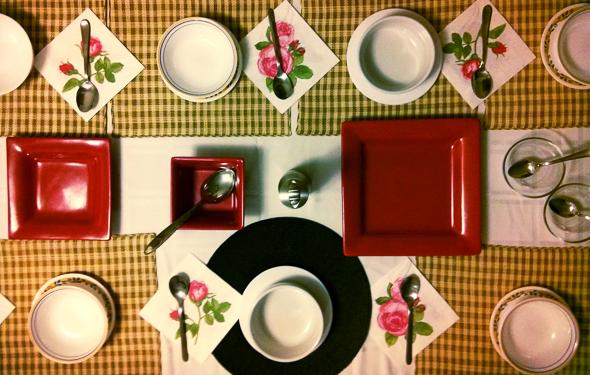
Family dinner at home. Shot with my brand new and awesome Google Nexus 4.
Video
Schindler’s List Cut by Cut: Part 2.
Last week, we analyzed one of the most important scene’s from Schindler’s List and the amazing editing work by Michael Kahn. We suggest you read Schindler’s List Cut by Cut: Part 1 first.
Great editing can only be accomplished if there is great footage to begin with. Look closely at Kaminski’s compositions; whether handheld or locked down he constantly plays with all the corners of the frame, showing dynamic blocking and camera movement to work in conjunction with the pace set by Kahn’s editing. This is what making a good picture is all about.
Michael Kahn’s editing is just phenomenal. His transitions are abrupt, but we never lose sight of the story. Let’s continue dissecting Schindler’s and Stern’s dialog while they create THE list of “essential” people.
Cut 15 Two-shot: Stern and Schindler trying to remember a name.
Cut 16 Typing a name.
Cut 17 Low-angle close shot of Stern trying to recall a name. Schindler seconding him off screen.
Cut 18 Typing a name.


Click here to continue reading (more…)
Video
Schindler’s List Cut by Cut: Part 1
Steven Spielberg’s Schindler’s List, tells the story of a German businessman who devises a plan to save over a thousand Polish Jews from annihilation by the Nazis. The picture’s narrative, acting, music and emotional impact are all outstanding. For obvious reasons, one of our favorite aspects of this movie is the beautifully composed and lit black-and-white cinematography by Janusz Kaminski. But the editing…..wow! Michael Kahn who happens to be the most-nominated editor in Academy Awards history (eight nominations) received the the Best Editing top recognition for this movie (and also for Raiders of the Lost Ark and Saving Private Ryan).
Throughout Schindler’s List, the story is pieced together with the use of “parallel editing“, or “cross-cutting”, a cinematic convention in which “two or more concurrent scenes are interwoven with each other.” Kahn and Spielberg successfully illuminate the hardships of the Jews and the opposing comfort and optimism of Schindler and the Nazis in Poland through this convention.
Why this blog post? In 2012 the Cinema Editor Magazine published a great article where the author dissected, cut-by-cut, one of the most important scenes of “Schindler’s List.” Last week we rented the DVD, went back to the article, and created screen grabs of each of the cuts in order to better understand Kahn’s editing. There are so many cuts (28) that we will split this post in two. We wanted to post the entire sequence but due to copyright issues, we can’t.
Schindler (Liam Neeson) and Itzhak Stern (Ben Kingsley) falsify documents and create a list of names to ensure that as many people as possible are deemed “essential” by the Nazi bureaucracy.
Cut 1 Extreme close-up of typewriter keys pounding out three names: as the screenplay puts it, “the letters the size of buildings, the sound as loud as gunshots.”
Cut 2 Medium shot of Stern typing; camera tracks with Schindler pacing past him, reciting the names of Poldek Pfefferberg, his close crony among the Jews, and Poldek’s wife, Mila.
Cut 3 Extreme close-up: “Pfefferberg” being typed.
Cut 4 Medium shot: Schindler giving another name. Pan right to include Stern at typewriter.
Cut 5 Extreme close-up of the name “Stagel” being typed.
Click to keep reading (more…)
Video
A movie about the most inspiring Brazilian artist you’ve never heard of.
UPDATE 0905: Mission Accomplished!!!!!
My extremely talented friend Andre Constantini has been working on a feature film called “Bel Borba Aqui.” The movie is about the most inspiring Brazilian artist you’ve never heard of.
While chatting with Andre about the film and his current Kickstarter campaign, I was schocked to know that they have well over 600 hours of footage. Andre shares here snippets of our conversation.
It’s Exponential
I just recently completed my first feature documentary film. With over 600 hours of footage and 3 years in the making, there has been a lot of time invested into the project. I had made short films before but increasing the scope of any project of this magnitude seems to exponentially increase the time it takes to complete it. But I digress, before you start a documentary it helps if you know the story you want to tell or the topic you want to explore.
Put It Out There
One year before I even knew that the subject of my film, a Brazilian artist living in Salvador, Brazil existed, I had a conversation with a colleague of mine expressing my desire to make a feature documentary on a living artist. A year later, I received a phone call from the same colleague stating that he found him and he was in Brazil and that I should come and meet him to see if it would work out.
Always Be Ready to Go
Even though we were just supposed to discuss the possibilities, on the first trip, I brought all of my equipment to shoot and after meeting the first day, we started shooting the second day. When I returned from my week long trip, I had already filmed for three days. This was enough to start cutting a short piece together to excite the subject and support.
The Edit Room
The editing process went along simultaneously with the shooting to some extent, coming up with rough sequences or themes. The key is not the is not where you start, it’s THAT you start. I find that as you have an idea for one scene or footage that you know worked out or you like, start there and find other footage that supports it visually or thematically (maybe even both). This part always takes the longest. But plan to have plenty of time to do this. Personally, I am best when I have large chunks of time where I can focus without distractions.
Here’s the Trailer:
The film is scheduled to release theatrically on October 3rd for a two week run at Film Forum in NYC. Let’s support Andre with his Kickstarter campaign. It could be you needing financing in a few years…
Video
Notes from the Field.
This is a scan from my journal that I bring with me to every preproduction meeting that I have with clients, directors, producers, and others. In this scan you can see my handy “preproduction notes.”
Here’s how my system works: first, I like to get the conversation going by sharing movies that we like and movies that could be related to the project at hand. This helps tremendously in our effort to understand both technically and aesthetically what the client or director is going after, and if we are a good match for the project.
About a year ago I sat down with a director who began envisioning a project as “film noir meets science fiction/kung fu—but in a funny way,” which saved us both a lot of time, as I was definitively not interested!
Let’s take a look at the other things I consider on every video production:
• Script: Do we have a script? Is it from a book or is it an original script? When can I see it? If there isn’t a script, who is going to write it and when? This is a very important step. Even though I always write the scripts for my own projects, it needs to be clearly defined who will perform this integral part when it comes to someone else’s project. I have been using Celtx, and I am very happy with the results. The script is by far THE most important piece on any video production puzzle.
• Shot list: As soon as I have the script, I start creating a shot list: what kind of gear do we need? Do we own it? Do we need to rent it? How many shots can we accomplish in one day? The answers to these questions can vary greatly depending on location, the scenes’ complexity, permits, and even the weather.
• Location Permits: Since most of us don’t have access to Hollywood’s sets and production budgets, being creative is extremely important. Having access to locations that other people don’t have access to is key. There are several beautiful abandoned buildings on Wall Street that no one knows about. In Harlem there are fantastic mansions that you can shoot if you know the right people. Battery Park is Federal property while Central Park is not. Both require shooting permits, issued by different offices.
• Location Scouting: I am often surprised to see how many people ignore this critical step. In cities like New York things change, and they change fast. The park that you so fondly remember is now a parking lot. And that awesome abandoned building? Well, it’s now a luxury condo.
Video
Conversations with Friends.
On the sixth Episode of our “Conversations with Friends” we sat down with Ted Kawalerski, professional photographer and director, to talk about his transition from still photography to documentary and corporate filmmaking after a 35-year career.
Ted talked about finding great partners for his digital cinema projects, and shared with us some of the rewards and joys and technical frustrations he has discovered during his transition.
We discussed Ted’s upcoming Family Life Academy video project, the importance of sound, the video editor’s role, and storytelling. In fact, we covered so many interesting topics that we decided to edit Episode 6 as Part 1, and Episode 7 as Part 2.
For this Episode we used Rode Lavalier Mics and Ted mentioned his preference for Rode Shotgun mics.
To celebrate the Spring’s arrival, Eduardo enjoyed a “sparklingly mild and fruity” Paulaner Hefe-Weissbier natural wheat beer with a “delicate yeast flavour, gleaming orange colour, and uniform cloudiness.” Ted drank about a gallon of tap water.
Here are the links to Episode 05, and Episode 04.
Please add your comments below! Are you enjoying our Conversations? Did you learn something new today?
Video
Tarantino’s Trunk Shot.
Quentin Tarantino’s movies are full of homages and historical references, as well as some personal visual trademarks like his now classic “trunk” shot. Enjoy.
Video
Exclusive Canon Cinema EOS screening.
On January 26, Canon will be hosting “an exclusive Cinema EOS Event” in Chicago. They will present a series of short movies shot with the brand new, game changing EOS C300 camera, as well as “Behind the Scenes” interviews with the directors and crew members. Canon’s amazing technical staff will be available to answer all your geeky questions.
There will be two screenings (morning and afternoon), and registration is required. Please share your experience with us if you attend.
Video
What makes a good picture?
“Probably the only reason I would advise someone to attend film school today is because it is an opportunity to discover all kinds of films that you will never be able to see in theaters.” Bernardo Bertolucci.
What makes a good picture? Actually, it is not that hard to define what a good photograph is. We start with basic elements of photography like exposure, composition, and texture, then we add interesting subjects, and then we add good lighting, which is essential. That’s it! If we understand the basic elements of photography, find interesting subjects, and have good lighting we can make good pictures.
Now, what makes a good movie? This one is a bit trickier. A good movie has all the elements that define a good picture, but now we need to add good stories, and on top of that we absolutely and definitively need to have good sound.
In essence, the biggest difference between shooting stills and motion is that with stills we are freezing moments, we are going for that perfect instant in time. In motion, we have many sequences of frames, and we need to keep them connected with dialog, composition, camera movement, color, and obviously, a great story.
Video
The DP who wasn’t known.
It is amazing how little we know about directors of photography. When we think about the Godfather series we immediately imagine Francis Ford Coppola, Marlon Brando, Al Pacino, and Robert De Niro. Some would even think of Mario Puzo. When we discuss Woody Allen movies like Zelig or Annie Hall we connect them with Mia Farrow and Diane Keaton, but very few people will know that the man responsible for the lighting, movement, and overall “look” of both movies is Gordon Willis, who is also responsible for “The Purple Rose of Cairo” and “Manhattan” among many others.
The Director of Photography, also known as DP, DOP, or Cinematographer, is responsible for the quality of the photography and the cinematic look of every movie by creating the appropriate mood, atmosphere, and visual style of each shot. The DP also determines the camera angles, lighting, shot composition, and camera movements, among many other technical considerations.
Here is the complete list, from 2000 to 2010, of all the directors of photography nominated for the Oscars. In 10 years Roger Deakins (my personal hero when it comes to cinematography) has been nominated 5 times for O Brother, Where Art Thou?, The Man Who Wasn’t There, The Assassination of Jesse James by the Coward Robert Ford, The Reader, and True Grit.
“The Man Who Wasn’t There” is an absolute masterpiece in Cinema lighting.
